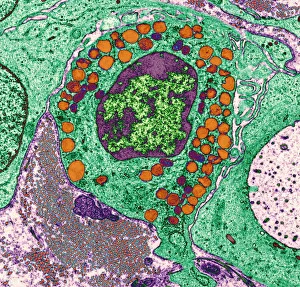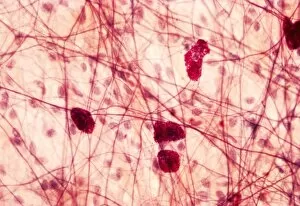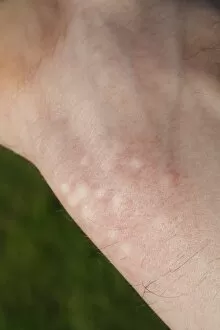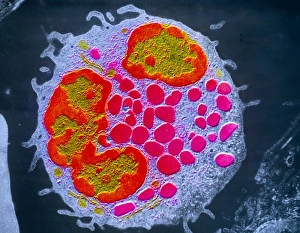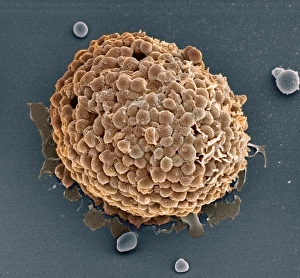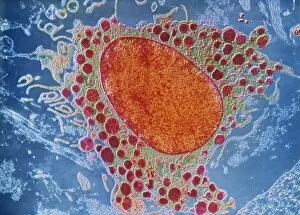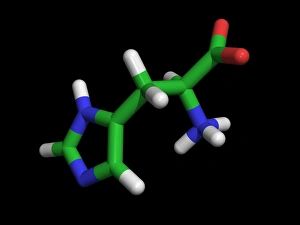Histamine Collection
Histamine: Unveiling the Mysterious Messenger of Allergic Reactions In the intricate world of our immune system, histamine plays a pivotal role as a messenger molecule
All Professionally Made to Order for Quick Shipping
Histamine: Unveiling the Mysterious Messenger of Allergic Reactions In the intricate world of our immune system, histamine plays a pivotal role as a messenger molecule. Derived from amino acids, this small organic compound is responsible for triggering various physiological responses when released by mast cells and basophil white blood cells. Imagine a sunny day in Suffolk, England, where an innocent encounter with Stinging Nettle leaves someone with an itchy and swollen wrist. This uncomfortable reaction occurs due to histamine release from mast cells after contact with allergens like those found in plants such as Urtica dioica. Biomedical illustrations reveal the cross-section view of how mast cells react to allergens by releasing histamine into surrounding tissues. As histamine floods these areas, inflammation ensues, causing systemic effects that can range from itching and redness to more severe symptoms like difficulty breathing or low blood pressure. Thankfully, science has developed antihistamines that block allergic reactions by binding to histamine receptors. These medications provide relief by preventing excessive histamine activity and reducing inflammation caused by allergies. Artistic representations depict the immune system's response when bacteria invade tissues. Mast cells become activated once again, releasing their stores to combat the intruders alongside other defense mechanisms orchestrated by our body's complex immunity network. Microscopic views offer glimpses into the fascinating world of mast cells – specialized immune cells abundant in connective tissue – revealing their distinctive appearance and highlighting their crucial role in allergy-related processes. These images showcase how these tiny warriors release histamine upon encountering allergens or antibodies bound specifically to them. Basophils also contribute significantly to our understanding of allergic reactions involving histamine release. Conceptual images portray these unique white blood cells actively participating in immune responses against invading pathogens or reacting sensitively during allergic episodes triggered by external stimuli. Histamine remains an enigmatic molecule whose actions have both protective roles within our immune system and the potential to cause discomfort during allergic reactions.

